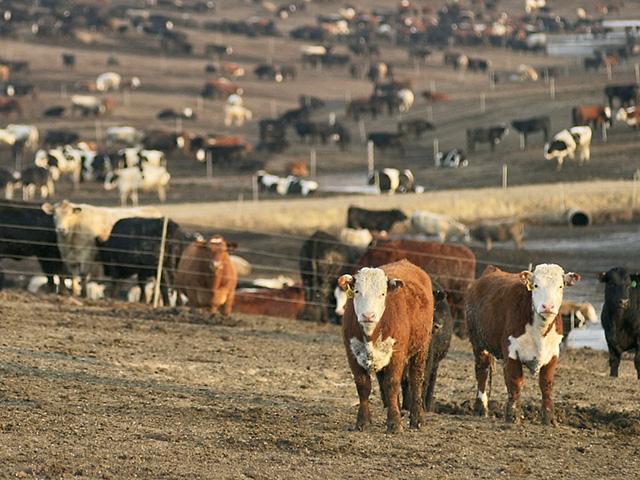Groups Want EPA NE Iowa Nitrates Fix
Environmental Groups Want EPA to Intervene in Northeast Iowa Drinking Water Nitrates Problem
LINCOLN, Neb. (DTN) -- Northeast Iowa residents continue to see dangerous levels of nitrates in drinking water and environmental groups have asked the U.S. Environmental Protection Agency (EPA) to investigate and take steps to clean it up in a petition filed on April 16.
The groups asked the EPA to take "immediate action" under the Safe Drinking Water Act to launch nitrate remediation in the region that features intensive livestock and crop production.
The petition, spearheaded by the Iowa Environmental Council and Food and Water Watch, said private and public wells have regularly exceeded the federal limit of 10 milligrams of nitrate per liter of drinking water for years.
State officials have taken steps to cut nitrate pollution in the karst region of Iowa but the petition said it hasn't been enough.
"The ongoing, persistent contamination of the karst region's water supplies, despite these efforts, demonstrates their ineffectiveness," the environmental groups said. "If EPA fails to step up, the ongoing contamination will continue."
In karst landscapes, dissolving bedrock creates sinkholes, caves, springs, sinking streams and other features. Karst includes limestone, marble, gypsum and other rock types. Those features make groundwater more susceptible to contamination.
P[L1] D[0x0] M[300x250] OOP[F] ADUNIT[] T[]
The groups asked EPA to require Iowa officials to identify residents who drink from private wells, provide alternative drinking water sources, create a plan to implement drinking water analysis for all residents and develop plans to reduce nitrate concentrations.
The petition also calls on EPA to investigate the state's permit requirements and best management practices for nutrient management from concentrated animal feeding operations and investigate other possible sources of nitrate pollution.
The groups asked EPA to determine what enforcement measures should be used to reduce nitrogen pollution from CAFOs and other "industrial agriculture" sources and to provide a timetable to reduce nitrate contamination.
The petition requests that EPA prohibit CAFOs in the region from "opening, expanding or modifying operations" in the karst region "unless and until nitrate concentrations in wells with historically high levels of nitrate consistently fall below the MCL of 10 mg/L."
A year ago, a similar petition was filed with EPA asking for similar steps to address nitrate pollution in the karst region of southeast Minnesota.
"EPA acknowledged the urgency of this problem in responding to a similar petition filed in Minnesota," the group said in the latest petition. "That petition addressed the same geologic formation and many of the same underground sources of drinking water. The EPA must act now to address this long-ignored health crisis in Iowa and ensure clean drinking water for Iowans."
The petition said about 250,000 people rely on community water systems and 63,000 access drinking water from private wells in northeast Iowa.
Also, the Iowa Department of Natural Resources identified 989 medium and large animal feeding operations with nearly 1.1 million animals in the region as of 2022.
The petition said that up to 80% of nitrate loading in karst regions is often traced to nitrogen fertilizers "quickly flushed" from soils into the karst and groundwater systems during rains.
"According to an analysis of USDA's recently released agricultural census data, Iowa's animal production industry produces far more animal waste than any other state -- 109 billion pounds of manure annually, a 78% increase since 2002 and more than 25 times the state's human population," the groups said in their petition.
"In the 12-county area, much of the land cover is devoted to agriculture. Over the last few decades, more acreage has been converted to row-crop production, with most of the conversion from pasture/grassland. There is a high concentration of agriculture in a sensitive karst landscape with a high sensitivity to groundwater contamination," according to the petition.
"Despite Iowa applying for and being granted 'primacy' under the SDWA, state and local officials have failed to do what is needed to correct the pervasive threat to human health. The data confirm that past measures employed by the state have been unsuccessful at reducing nitrate concentrations in crucial drinking water sources to below federal and state standards."
Todd Neeley can be reached at todd.neeley@dtn.com
Follow him on social platform X @DTNeeley
(c) Copyright 2024 DTN, LLC. All rights reserved.




